Port and Starboard Of Vessels Explained – Everything You Wanted To Know
When commandeering a vessel of massive proportions, it is important that information is correctly passed between the various systems of the ship.
For instance, left and right are ambiguous directions that depend on the location of the observer and the way they are facing.
Passing directions in such a manner is a recipe for disaster, as the captain’s left may differ from that of the person operating the steering gear.
This ambiguity persisted for a considerable period until it was regularized around the 16th century AD.
The ship was demarcated into two zones that defined the right and left halves irrespective of where the observer was. These zones are the port and starboard directions that are in use in modern-day maritime terms.
The terms port and starboard are used instead of left and right since port and starboard never change as they are unambiguous references that are not affected by a mariner’s orientation. Hence, these nautical terms help mariners in avoiding confusion and improve onboard safety.
The port side is the ship’s left side when looking forwards towards the bow of the ship. The starboard is right side of the ship when facing the bow.
The bow is the part of the ship that is generally most forward when the ship is moving. The stern is the back of the ship or its aft-most part.
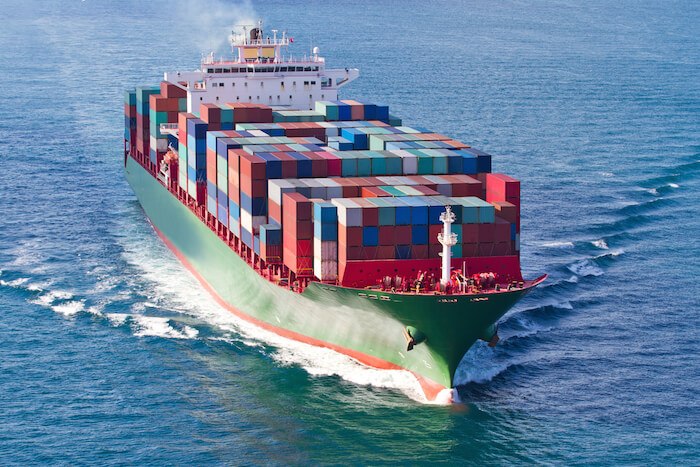
In this article, we will cover the concept of port and starboard and the various uses of these terms throughout maritime history.
Origin of the Terms – Port And Starboard
Port and starboard are non-interchangeable terms referring to the two halves of the vessel. When looking from the bow to the stern, the port lies on the right side, while the starboard side lies on the left side.
In nautical terms, the bow or fore lies at the forward of the ship, while the stern or aft is the rear portion. This definition of port and starboard ensures that these directions are unique irrespective of the position of the concerned party.
The origin of these terms comes from the old English usage for their respective purposes. In the early days of boating, boats were steered with the aid of a steering oar at the stern, and the majority of sailors were right-handed.
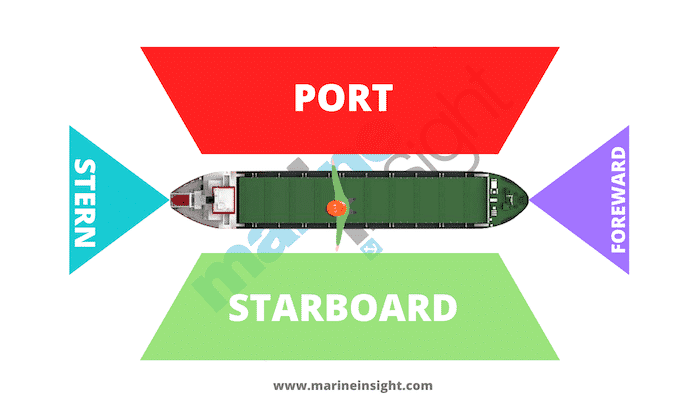
These steering oars functioned as the rudders of the craft and had to be expertly manoeuvred. Hence, it was easier to have the steering oar on the right-hand side so that the sailor was facing forward comfortably.
Sailors started to call the right side the steering side, which became starboard when the two old English words ‘steor’, meaning steer and ‘bord’, meaning the side of a boat, were combined. The word changed to steerboard and then finally starboard. As the size of the boats increased, so did the steering oar, which made it easier to tie the boat to a dock on the side opposite the oar. This side came to be called the larboard or the loading side.
Another theory as to why it is called starboard is that Vikings called the sides of their ships boards, and the word for the steering oar sounded like star. They steered from the right side as well, and so the right side was the board with the star or the starboard.
Another explanation is that during this time, the seagoing ships of Northern Europe all had a side-hung rudder situated on the right-hand side. This rudder was also known as ‘steorbord’ in Anglo-Saxon. The word ‘steorbord’ evolved into ‘starboard’ over time, and it is used in the English language to describe anything to the right of a vessel’s centreline when seen from the rear.
For smaller crafts and sailboats, this led to some difficulty in loading goods from this side of the vessel. So, boats would dock with their left-hand side against the port wharves.
This led to the left side being called the larboard, based on the corruption of the old English term for loading. However, it was common to confuse the terms larboard and starboard while sailing, as they sounded similar. Thus, larboard was later replaced by the term port. This also aided in other terminology, as it was the left-hand side that was moored to the port.
The usage of these terms became common as English trading ships sailed to several countries during the sixteenth and seventeenth centuries AD.
During the colonization era, these terms were broadly accepted by sailors in countries spanning from India to the United States. Eventually, with the formation of regulatory bodies to develop a uniform code for maritime terminology, the terms port and starboard were accepted due to their widespread usage.
Some easy ways to remember port and starboard
- One trick to remember is to think that the word port means left since both have 4 letters. Hence, starboard would mean right.
- Another easy saying to remember is ‘ A sailor named Red, Left from the port”
- One can imagine a nice bottle of port and remember the saying, “There is some red port left in the bottle” – Red Port Left.
Enforcement and Maritime Regulations
Port and starboard are the official directions for left and right on all vessels, and this convention was laid down in the International Regulations for Preventing Collisions at Sea.
This navigational treaty ensured that stringent rules were followed during any manoeuvres to prevent collisions and untoward incidents.
Also, considering that poor visibility could lead to difficulty in identifying the port and starboard sides of vessels, colour codes were assigned based on accepted conventions. These are discussed in greater detail in the next section.
Often, marine officers are trained extensively in becoming comfortable with using the terms port and starboard. The reason for this is that difficult manoeuvres may require them to react spontaneously and issue directions.
During such high-stressed environments, it is important that they continue to use conventional terms of navigation.
In addition, in the unfortunate event of an accident and during subsequent court proceedings, if the captain or concerned officers are found guilty of using terms such as left or right to refer to their vessel or other vessels, and if found that this error led to the accident, they are then eligible to be held guilty for having caused sinking or damage to the vessel. Thus, it is essential and important that the right technical terms are used to describe the two halves of the vessel.
These terms also become useful while passing messages between ships. For instance, instead of mentioning that a vessel would be passing to the right or left of a ship, the terms starboard and port can be used.
As right and left are ambiguous due to the lateral inversion of perspective, there is a higher risk of a collision without the use of proper terms.
Directions in Navigation and Steering
Along with the port and starboard nautical terms, colours are also used to aid in navigation, especially during night manoeuvres.
Red is the international convention for the port side, while green is the colour for the starboard side. Hence, the port side has red navigation lights, and the starboard side has green navigation lights. This is common on aircraft and helicopter vessels. This is because aircraft need to be able to judge the two halves of the ship during night flights, and the main deck lights are often turned off for military reasons, especially during times of war.
Thus, only small red and green stripes are present for the pilot to judge the location of the vessel and the area that they need to land on.
Ships also have white lights on the masthead and stern. These, combined with the red and green lights, make it easy to identify the ship’s direction at night.
Also, this colour code system aids in preventing the risk of collision when there is a lack of light. Without clear visibility, it can be difficult to judge whether a vessel is approaching or heading away from your ship.
However, by considering the order of the lights on the vessel, a conclusion can be drawn as to the position of the craft by following a simple convention to decide its direction of movement.
When facing the other vessel, if the red light is on the right and the green is on the left, the indication is that the vessel is approaching your position.
On the other hand, should the colours be interchanged, that indicates that the vessel is moving further away from your ship. Thus, by following this convention of right or left, it is possible to accurately determine the direction of motion of the other vessel.
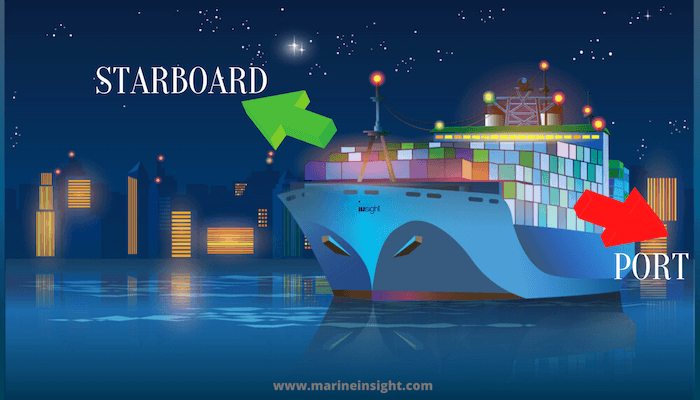
Certain conventions are to be followed when passing directions to the officers at the helm.
In general, a fixed officer of the watch is responsible for manning the observation deck of the bridge and for calling out directional changes to the helmsman.
These directions must be passed as X degrees to the Port or Starboard. Here, X can take values ranging from 0⁰ to 180⁰ and indicates how much the ship should turn in the relevant direction.
In general, 0⁰ to either side does not result in any change in direction. For instance, 90⁰ to the starboard indicates that the vessel must now proceed in a direction perpendicular to the initial direction and on the starboard side.
An important point to keep in mind is that ships do not take drastic changes in direction. Considering the enormous size of these vessels, it may take an average of a few kilometres for the ship to execute a direction change of a few degrees. Thus, commercial cargo and passenger-carrying vessels generally limit direction changes to within 45⁰ on the port and starboard sides.
On the other hand, warships and high-speed attack crafts are often required to make tight manoeuvres that require sudden and large changes in direction. Thus, warships can turn up to 150 ⁰ on either side under extreme conditions. In modern ships with navigational technology, corrections can be made by the computing software itself instead of having to call values out to an individual at the helm.
To do so, information can be fed into the system in the form of two parameters- the angle of change and whether the change is in the port or starboard side. Such an automated system reduces the chances of error and allows the officers to attend to more immediate duties.
An interesting point to note is that although 180⁰ to either the port or starboard should indicate the same direction, they actually indicate the direction in which the vessel must turn. For instance, if an about-turn is required and the area to the port side of a vessel is inaccessible due to rocks or mines, the instruction passed to the steering system is 180⁰ to the starboard.
Incorrectly passing information has led to major mishaps in the past. So, although both instructions put the vessel in almost the same position, care must be taken when using them. In addition to manoeuvring, the terms port and starboard are also used to spot and convey the location of an object, mainly on warships.
To do so, the officer on the deck or the observation officer must accurately determine the position of the object that they intend to report.
A phrase similar to that used in navigation is then used- X degrees to the port or starboard. This information is conveyed either to the captain or to an officer manning the weapon system.
Once this is done, the heading and other related information are fed into the system before appropriate action is taken. This system of reporting by using both an angle and a side is useful when it comes to calculating the speed of an object.
For example, take an object initially at a certain angle on the port. If it is able to cover a fixed angle in a set amount of time, the distance covered and the speed of the object can be calculated through basic trigonometry. Thus, the port and starboard terms have a profound usage in the field of navigation and manoeuvring.
Structure and Construction of Port And Starboard
Now, we will discuss how the port and starboard sides of the ship are designed and constructed. Ships are usually built-in blocks that run along the entire beam of the vessel. Thus, the port and starboard halves are usually assembled together in a block before being welded to the adjacent blocks.
In the case of unsymmetrical vessels as well, the two halves are never separately assembled. In general, most ships are symmetrical about their centerline on both sides. This has proven to be the ideal design that allows for the least resistance in moving a ship.
However, certain experiments conducted in recent times at hydrodynamic testing facilities have pointed out that specific vessels that are unsymmetrical can have better performance parameters compared to their symmetrical counterparts.
For the purpose of this article, we will assume that all ships and vessels are symmetric below the waterline, as this is the only region where fluid resistance acts. The region above the waterline can be either symmetric or not based on its use.
When asked about the most common unsymmetrically designed ships, the first example that often springs to mind is that of aircraft carriers. These carriers generally have a conning tower and their superstructure on the starboard side, while a long runway is installed on the port.
This runway angles to the port, away from the centerline of the ship. The reason why this convention exists is because of human tendency. During an aborted landing, fighter crafts have to rapidly gain speed and pull up without crashing into any other planes or structures on the deck.
Studies have shown that most pilots turn to the left when faced with an aborted landing and even during accidents. This logic is followed even while driving on roads in some countries. Most cars have steering wheel positions that enable the driver to safely pull over to the left instead of heading to the right where there is incoming traffic.
Coming back to aircraft carriers, the convention of keeping the conning tower on the starboard has been in use since the first craft carriers. Due to existing technology, no serious efforts have been made to change the configuration of an aircraft carrier. It has been far easier to allow pilots to train with the current layout and follow existing design specifications.
Over to You…
Although the terms port and starboard started off on-board English ships several centuries ago, they have found their way into every mariner’s life. Without them, navigation would be a nightmare, and accidents would be frequent occurrences.
Think that there is something interesting missing about these navigational terms? Have a new point or opinion to add? Let us know your thoughts in the comments section.
Do you have info to share with us ? Suggest a correction

About Author
Ajay Menon is a graduate of the Indian Institute of Technology, Kharagpur, with an integrated major in Ocean Engineering and Naval Architecture. Besides writing, he balances chess and works out tunes on his keyboard during his free time.
Latest Naval Arch Articles You Would Like:
Subscribe To Our Newsletters
By subscribing, you agree to our Privacy Policy and may receive occasional deal communications; you can unsubscribe anytime.
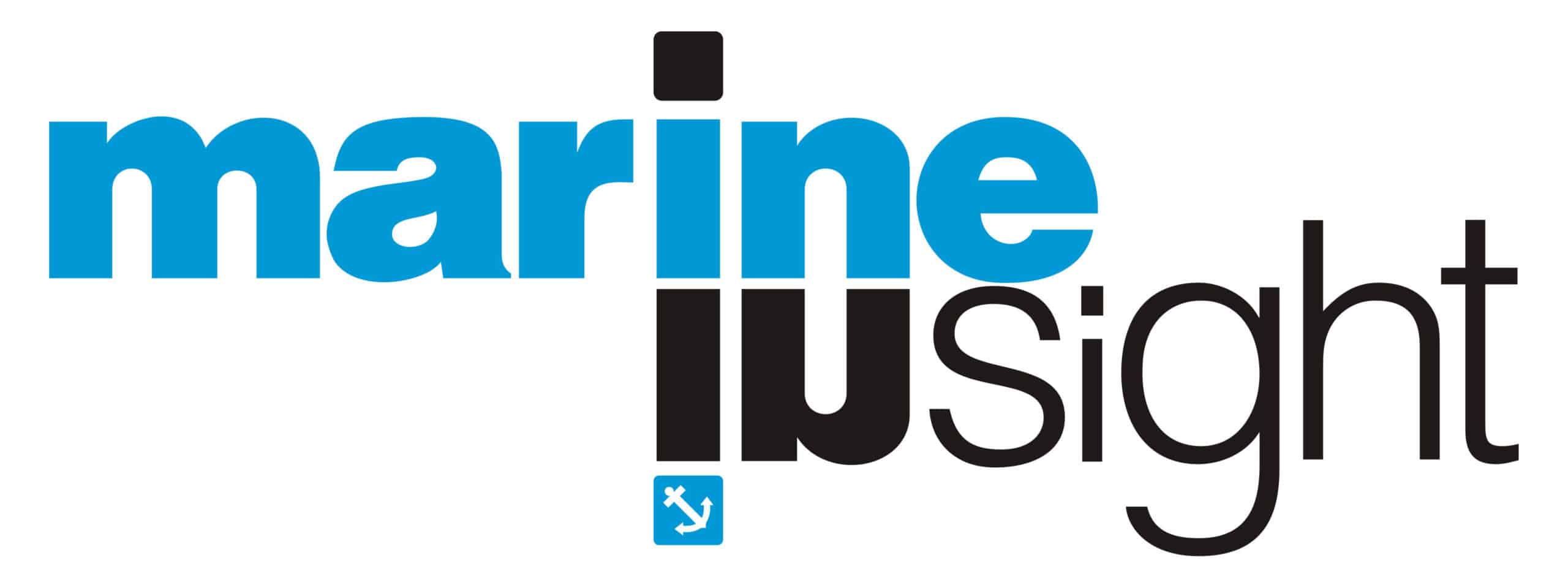


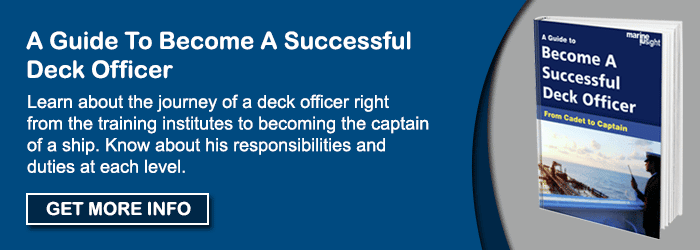

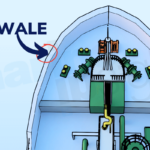
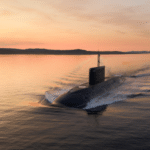
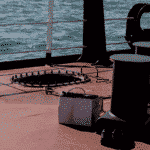
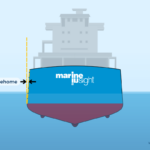
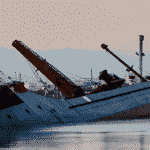
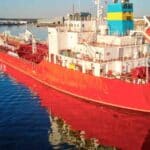
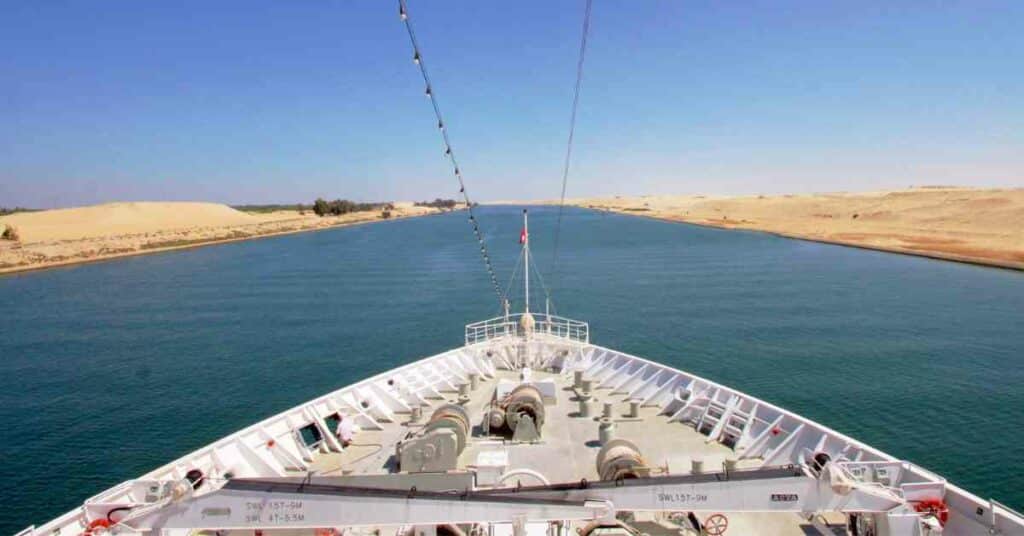
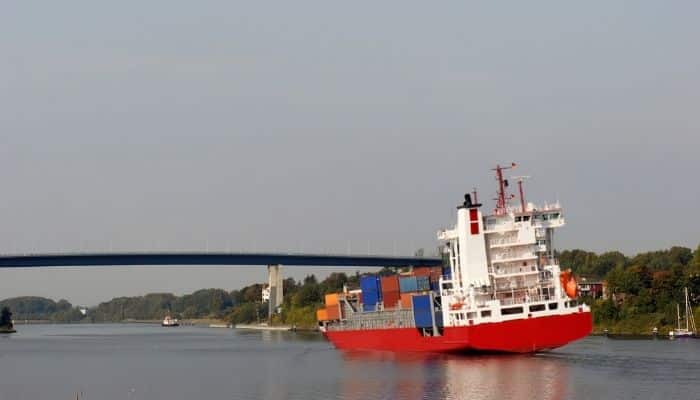
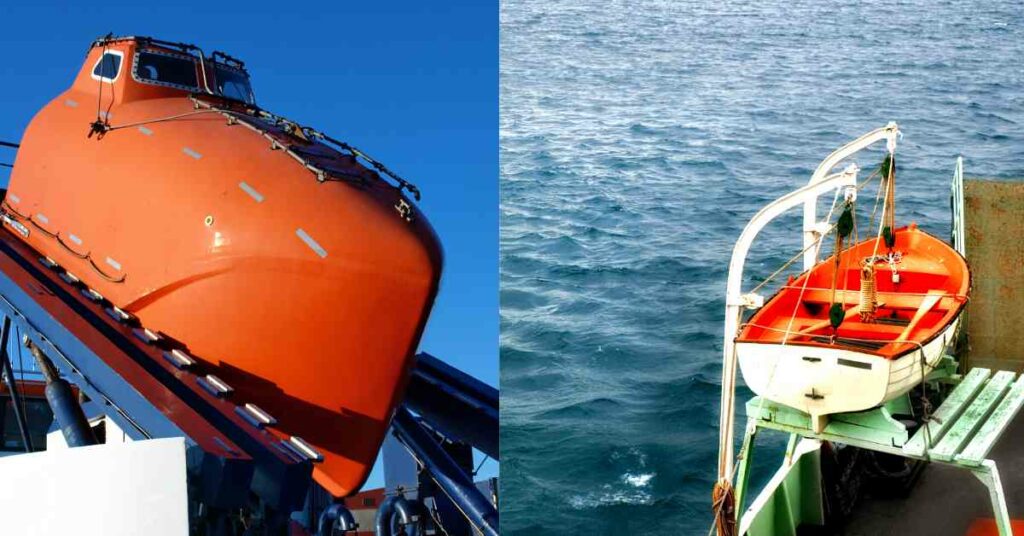
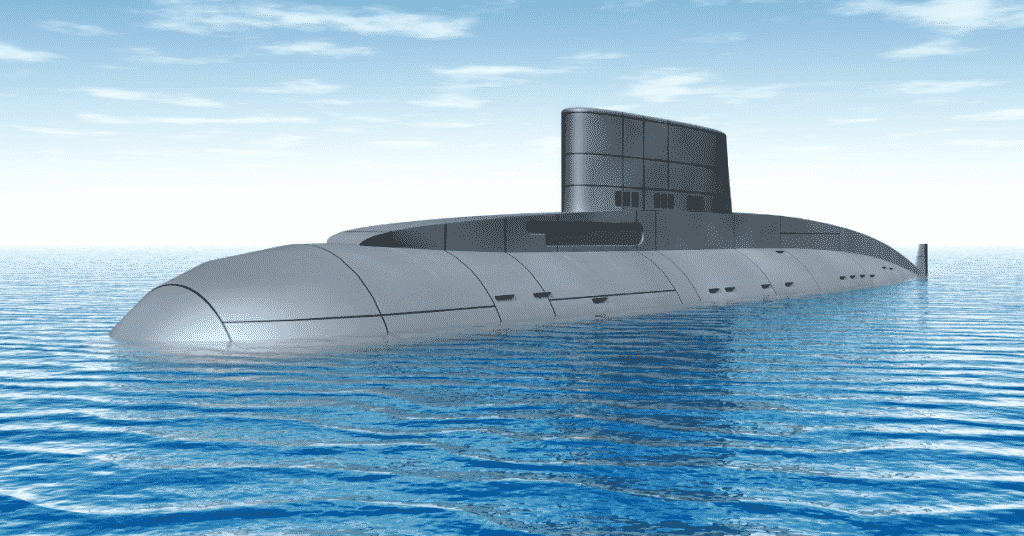
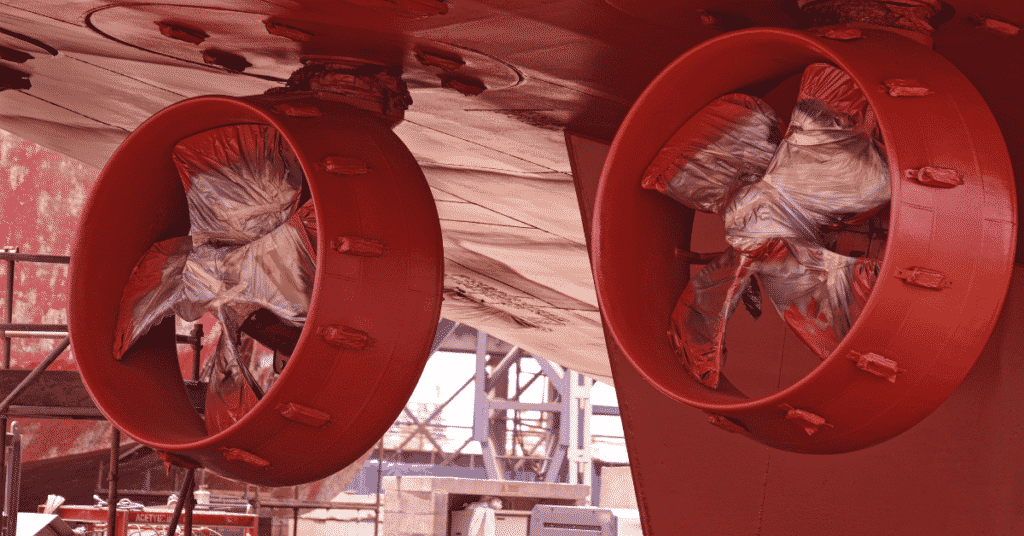
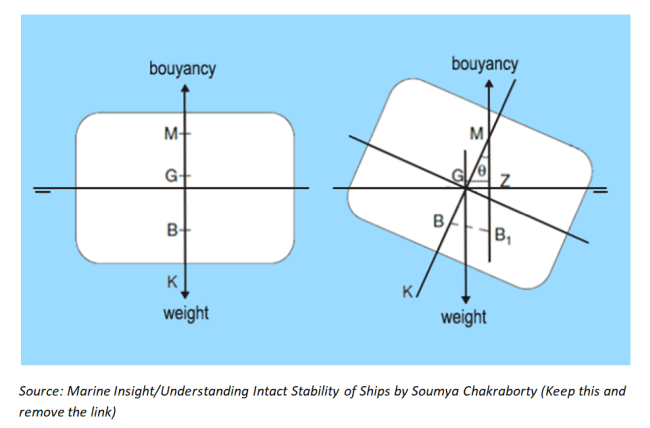
On British naval vessels, the steward who poured the after meal Port wine always poured from the left side, Port and the wine is red in color.
“When looking from the bow to the stern, the port lies on the right side while the starboard side lies on the left side.”
This sentence above is technically correct but it is a confusing definition for port and starboard, associating the word port with the right side and the word starboard with the left side.
Why not just define it the simplest way and the way the terms are actually used (port/left and starboard/right), by looking from stern to bow, or along the current heading (where the ships head/bow) is pointing.
Oops, sorry to get the earlier commenters names wrong… David, then Ronan. 😊